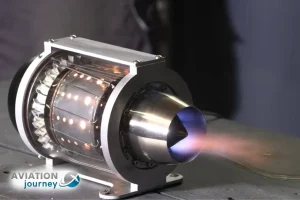Miniature Jet Engines: How Small Turbines Wor
Ever heard that ear-shattering whoosh as a model Miniature Jet Engines flashes across the horizon? That amazing noise and velocity is thanks to small jet engines – exactly miniaturized versions of the enormous engines that propel commercial jet airliners. Let me take you through the whole thing about these incredible devices in simple terms.
What Exactly Are Miniature Jet Engines?
Picture taking a Boeing 747‘s engine and miniaturizing it to the size of a big watermelon – that’s basically what these are! While the full-size jet engines weigh thousands of pounds, these diminutive versions weigh only 5-50 pounds. Don’t be deceived by their compact size, though – they’re as impressive as their larger relatives.
These mini powerplants are mainly applied to:
-
High-performance radio-controlled aircraft
-
Surveillance and military drones
-
Aerospace education and research
-
Experimental personal air vehicles
How They Work (No Engineering Degree Required!)

The magic happens in four simple steps:
-
Suck: The engine inhales air through its front opening – imagine a giant vacuum cleaner sucking in air at 500 mph!
-
Squeeze: A rapidly spinning compressor (like a fancy fan) crushes this air to high pressure – we’re talking 3-4 times normal air pressure!
-
Bang: Fuel sprays in and ignites, creating a continuous explosion – picture a blowtorch flame but 100 times more powerful
-
Blow: The super-hot gases blast out the back, creating enough thrust to push a 50-pound model jet to 300+ mph
The really mind-blowing part? Some of these tiny engines spin at over 100,000 revolutions per minute – that’s nearly twice as fast as a Formula 1 race car engine at full throttle!
Different Flavors for Different Needs
Just like full-size jets, miniature engines come in several varieties:
Turbojets – The simplest type:
-
Best for: Speed demons (some RC jets hit 400+ mph!)
-
Downside: Thirsty fuel drinkers
Turbofans – More sophisticated:
-
Features: Extra fan at the front for better efficiency
-
Used in: Some military drones
Turboprops – The oddballs:
-
Instead of pure jet thrust, they spin a propeller
-
Great for: Long-endurance flights
Where These Tiny Titans Shine
-
Hobbyist’s Paradise
Serious RC enthusiasts shell out $5,000-$50,000 for these engines. The payoff? Model jets that perform just like the real thing – complete with afterburner flames! -
Military Might
Modern surveillance drones use these engines to:
-
Stay airborne for 10+ hours
-
Reach altitudes over 25,000 feet
-
Carry sophisticated cameras and sensors
-
Classroom Heroes
Engineering students love these because:
-
They demonstrate real jet engine principles
-
Are much safer than full-scale engines
-
Can be taken apart and reassembled
-
Future Tech Testbeds
Several companies are experimenting with:
-
Personal flying vehicles
-
Hybrid electric/jet systems
-
Even miniature space thrusters!
The Not-So-Perfect Side
Before you max out your credit card, consider:
Cost:
A top-end model can cost as much as a luxury car – the JetCat P400 Pro will set you back about $35,000!
Fuel Thirst:
These little guys can burn through a gallon of jet fuel in 15-30 minutes – that’s like drinking a soda can’s worth every minute!
Noise Levels:
At full power, they produce about 120 decibels – roughly as loud as a rock concert or chainsaw. Ear protection is a must!
See also:Airbus A300-600ST Beluga: Oversized Cargo Transport Giant
What’s Coming Next?
The future looks bright (and fast!) for miniature jets:
-
3D Printing Revolution
New manufacturing techniques could slash prices by 50% or more -
Hybrid Power
Combining electric motors with jet turbines for better efficiency -
Space Applications
NASA is testing miniature jets for:
-
Satellite positioning
-
Small spacecraft propulsion
Frequently Asked Questions
Q: How much thrust do they produce?
A: The biggest RC versions can push 100+ pounds – enough to theoretically lift a small adult!
Q: Are they safe for beginners?
A: Not really – the exhaust gets hotter than a pizza oven (1,000°F+), and the spinning parts are dangerous. Start with an experienced mentor.
Q: What fuel do they use?
A: Usually kerosene-based jet fuel, but some run on diesel or even propane!
Q: Can I fly a jet-powered model at my local park?
A: Probably not – most places require special insurance and flying sites for turbine models.
Why These Little Engines Matter
Beyond being incredibly cool, miniature jet engines:
-
Help train the next generation of aerospace engineers
-
Drive innovation in materials and manufacturing
-
Keep pushing the boundaries of what’s possible
As 3D printing and new materials bring costs down, we’re likely to see these amazing machines in more applications – maybe even in your garage someday!
Want to experience the thrill firsthand? Many RC airshows feature jaw-dropping jet demonstrations. Just don’t forget your earplugs!

